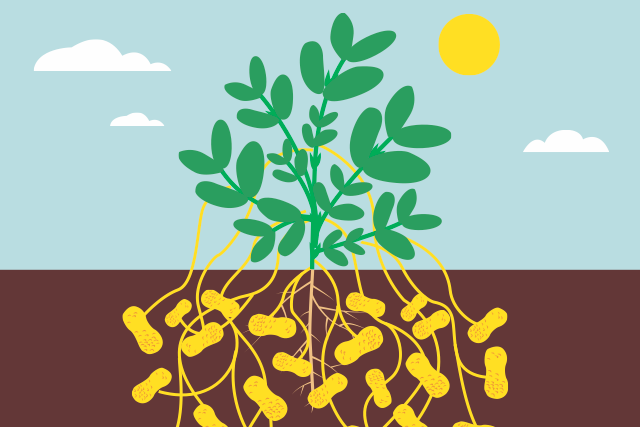Peanut Planting Season Is Here, But How Do Peanuts Grow?

It’s that time of year again—peanut planting season has begun. April and May provide ideal conditions for growing peanuts, so farmers have already begun planting kernels. But where are peanuts grown and how are they different than other crops? Below we cover the details on peanut farming and fun facts about how they grow.
Where do peanuts grow in the U.S.?
The “Peanut Belt” consists of 13 southern states in the U.S. that plant and grow peanuts, including Alabama, Arkansas, Florida, Georgia, Louisiana, Missouri, Mississippi, North Carolina, New Mexico, Oklahoma, South Carolina, Texas, and Virginia. The majority of peanut production, however, primarily occurs in Georgia, Texas, Alabama, Florida, North Carolina, and South Carolina. Peanut farms in these states account for almost 90 percent of the U.S. market.
How do peanuts grow?
The best legumes require around 150 frost-free days, which is why spring is the ideal time. Peanut season kicks off with the planting of specially grown kernels about two inches deep into the soil. Depending on the type of peanuts and peanut size, the growing cycle is around four or five months. Unlike walnuts or pecans, peanuts grow beneath the soil, while the plant flowers above ground and can reach up to 20 inches in height.
The first signs of the seedling will be an oval-leafed plant that starts to emerge from the soil about 10 days after planting the kernels.
Around 40 days after the initial planting, yellow flowers will start to bloom around the bottom of the legume. The yellow flowers pollinate, and the petals fall off as the peanut ovaries begin to bud and take shape. At this stage, the peanut ovaries are known as “pegs.” These pegs soon begin to extend and penetrate the soil, slowly growing into what we know as peanuts.
Each peanut plant produces around 40 or more peanuts in shells.
What is harvesting peanuts like?
Once the peanut plants have fully matured, they are ready for harvest. When harvesting peanuts, a farmer wants the soil to be in perfect condition—not too wet and not too dry. Peanut farms use machines known as “diggers” to pull up and harvest the plants. The peanut plants are then left for a couple of days to dry and lose any excess moisture.
After drying, peanut farmers use a combine to separate the peanuts from the vines, and the vines are dispersed back into the field to re-nourish the soil or feed the livestock. Wagons are then filled with the raw peanuts in bulk, where they are cured with warm air, bringing peanut season to its end.
Hampton Farms has been delivering the freshest, best quality peanuts from seed to shelf since 1917. Our business is family owned and operated, and we are committed to producing the finest nut-based snacks and services with integrity, honesty and the pride of American farmers. If you’re looking for a heart-healthy, nutritious snack, purchase some Hampton Farms nuts today!


Leave a comment